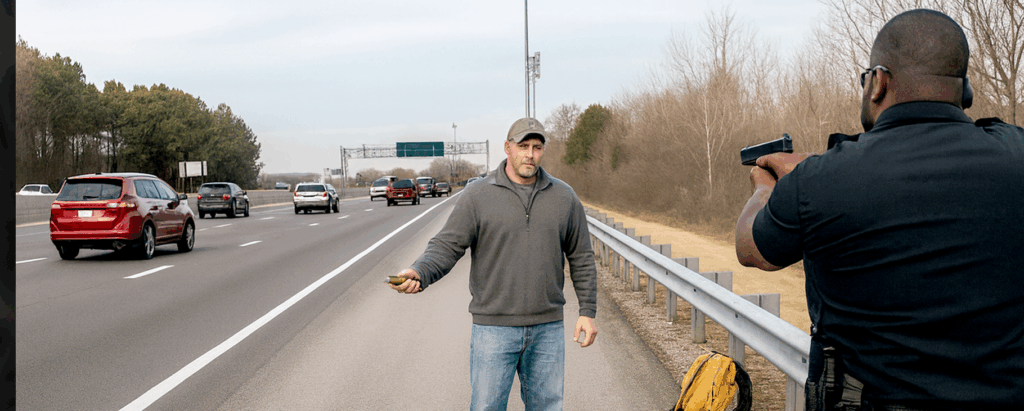United States v. Moses, 2025 WL 1840675 (3rd Cir. 2025)
In a suburb of Pittsburgh, Pennsylvania, Ronell Moses was driving through his neighborhood when Officer Dustin Hess passed him going the opposite direction. Officer Hess had his patrol vehicle windows rolled down and he could smell burning marijuana wafting from Moses’s car. Officer Hess also noted Moses’ car windows were tinted beyond the legal limit. Hess turned and followed Moses to his home, where Moses pulled into the driveway and stopped.
Officer Hess parked at the end of the driveway and walked up to Moses’ car. After confirming Moses had been smoking marijuana, the officer asked to search Moses’ car. Moses declined, but Officer Hess searched it anyway and found a loaded gun in the center console, which turned out to have been stolen. Since Moses was a felon on probation, Officer Hess arrested him for possessing a gun and ammunition.
Moses asked the court to suppress the evidence from the search, arguing Officer Hess violated the curtilage of his home by walking up the driveway. The trial court denied Moses’ motion to suppress. Moses entered a conditional plea of guilty, preserving his right to appeal.
The court of appeals held Officer Hess did not invade the curtilage because the driveway was not an extension of Moses’ home. Consistent with a move by other appellate courts, the court reviewed de novo the trial court’s curtilage decision ruling (giving no deference to the lower court decision on a question of law). The court cited three bases for its decision: “First, a holistic view shows that this patch of driveway was not an extension of Moses’s home. Second, the United States v. Dunn factors confirm that belief. And third, reasoning from the purpose of the curtilage rule confirms it too: A reasonable officer would not expect to learn more about the inside of Moses’s home by walking up the driveway than he could by standing on the street.”
In United States v. Dunn (480 U.S. 294 (1987)), the Supreme Court held the scope of curtilage is determined by “whether the area in question is so intimately tied to the home itself that it should be placed under the home’s ‘umbrella’ of Fourth Amendment protection.” The Dunn decision laid out four analytical factors to help decide whether an area counts as curtilage:
- How close the area is to the house.
- Whether the area was enclosed with the house.
- Whether the homeowner apparently used it for domestic activities.
- How much the homeowner shielded the area from the view of people passing by.
In spite of these factors, the Supreme Court has more recently applied its “daily experience” test to help with such a determination: “for most homes, the boundaries of the curtilage will be clearly marked, and the conception defining the curtilage — as the area around the home to which the activity of home life extends — is a familiar one easily understood from our daily experience.”
The appellate court noted Officer Hess didn’t get anywhere close to Moses’ house. Moses pulled only 20 to 30 feet into a 70-foot-long driveway. There was no enclosure clearly separating the part of the driveway where Officer Hess stood from the open front yard. There was no sign that the driveway was used for anything other than parking cars, including no sign of “domestic activity” in the driveway. Finally, even though there was a row of low bushes along the street, nothing prevented a passerby from seeing clearly into the driveway.
Moses also claimed 18 U.S.C. § 922(g)(1), which prohibits possession of a firearm and/or ammunition by a felon, violates the Second Amendment. As have many other courts, the court of appeals disagreed. The appellate court upheld Moses’ conviction.



